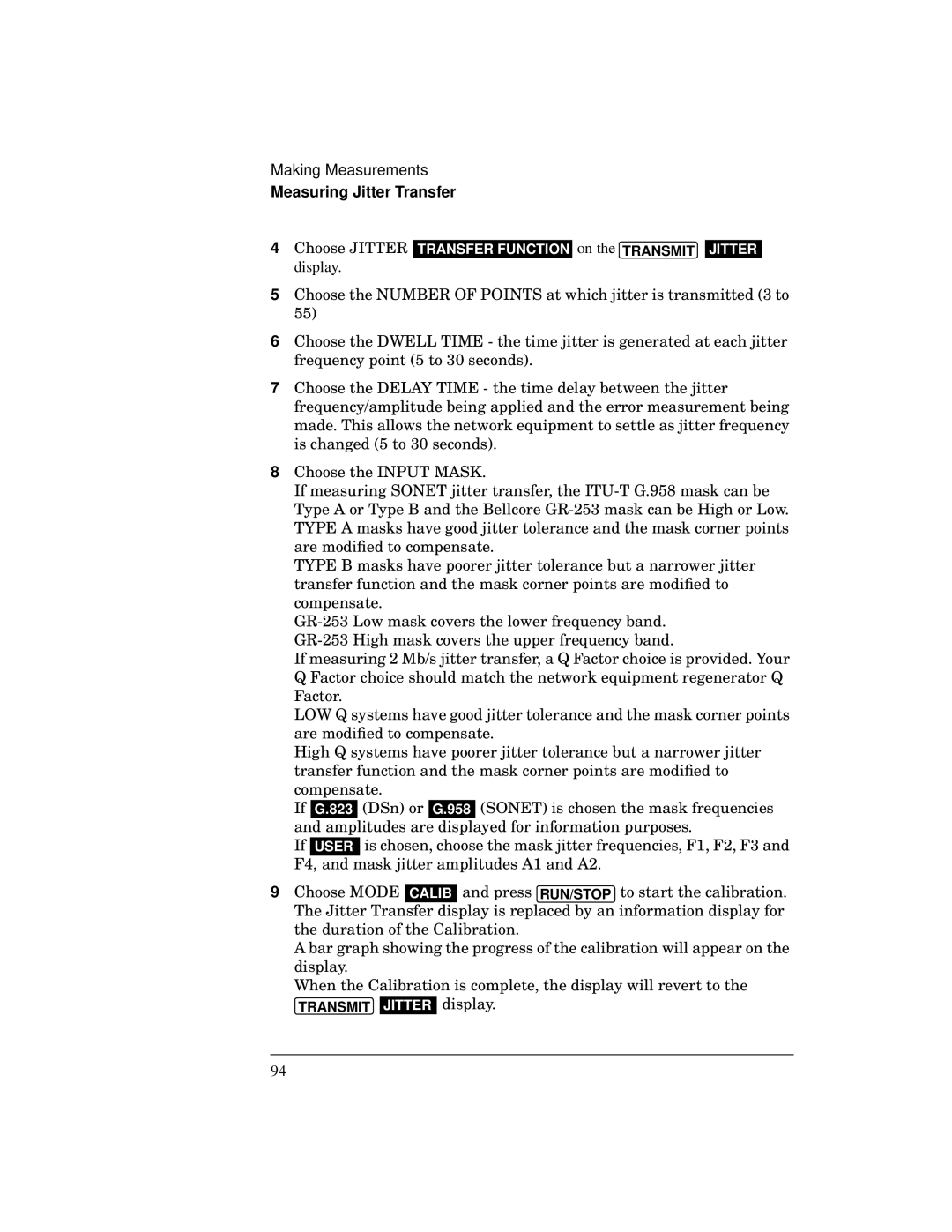
Making Measurements
Measuring Jitter Transfer
4 Choose JITTER TRANSFER FUNCTION on the TRANSMIT JITTER
display.
5Choose the NUMBER OF POINTS at which jitter is transmitted (3 to 55)
6Choose the DWELL TIME - the time jitter is generated at each jitter frequency point (5 to 30 seconds).
7Choose the DELAY TIME - the time delay between the jitter frequency/amplitude being applied and the error measurement being made. This allows the network equipment to settle as jitter frequency is changed (5 to 30 seconds).
8Choose the INPUT MASK.
If measuring SONET jitter transfer, the
TYPE B masks have poorer jitter tolerance but a narrower jitter transfer function and the mask corner points are modified to compensate.
If measuring 2 Mb/s jitter transfer, a Q Factor choice is provided. Your Q Factor choice should match the network equipment regenerator Q Factor.
LOW Q systems have good jitter tolerance and the mask corner points are modified to compensate.
High Q systems have poorer jitter tolerance but a narrower jitter transfer function and the mask corner points are modified to compensate.
If G.823 (DSn) or G.958 (SONET) is chosen the mask frequencies and amplitudes are displayed for information purposes.
If USER is chosen, choose the mask jitter frequencies, F1, F2, F3 and F4, and mask jitter amplitudes A1 and A2.
9Choose MODE CALIB and press RUN/STOP to start the calibration. The Jitter Transfer display is replaced by an information display for the duration of the Calibration.
A bar graph showing the progress of the calibration will appear on the display.
When the Calibration is complete, the display will revert to the
TRANSMIT JITTER display.
94
